It has been forty years since King Tut took up a four-month residence at our New Orleans Museum of Art, creating much fanfare. The museum is again host to another Egyptian sensation, Queen Nefertari, with the 2022 version of hoopla.
That includes a special menu Chef Chris Montero has created in collaboration with two Egyptian chefs, one from Cairo by way of DC, and another local by way of Alexandria. (Egypt, not Louisiana.)
The first private dinner featuring a regional Cairo menu was held in April. The second one is coming up, presenting the Alexandria way of making the same Mediterranean dishes that many cultures share, each with its own nuances.
For example, dolmas, or dolmades, which most people think of as a Greek dish, are eaten in all the countries surrounding the Mediterranean in the Middle East. In Cairo, the grape leaves are stuffed with rice and beef, and in Alexandria, it is only the ancient grain freekeh.
The second special private dinner will be foods eaten in Alexandria, Egypt, which will likely be similar to the first dinner’s menu, adjusting for regional differences.
For the rest of us, there is the “Egyptian” menu integrated into the regular Cafe NOMA offerings. Tom and I joined our radio show producer Patty for lunch there one very rainy day recently.
It is always nice to be a guest, but it was especially convenient this day because the lines were so long at the cafe we would not have had time to sample this food otherwise. We were served all the Egyptian food currently on the menu. And Patty got a delicious-looking Cobb salad.
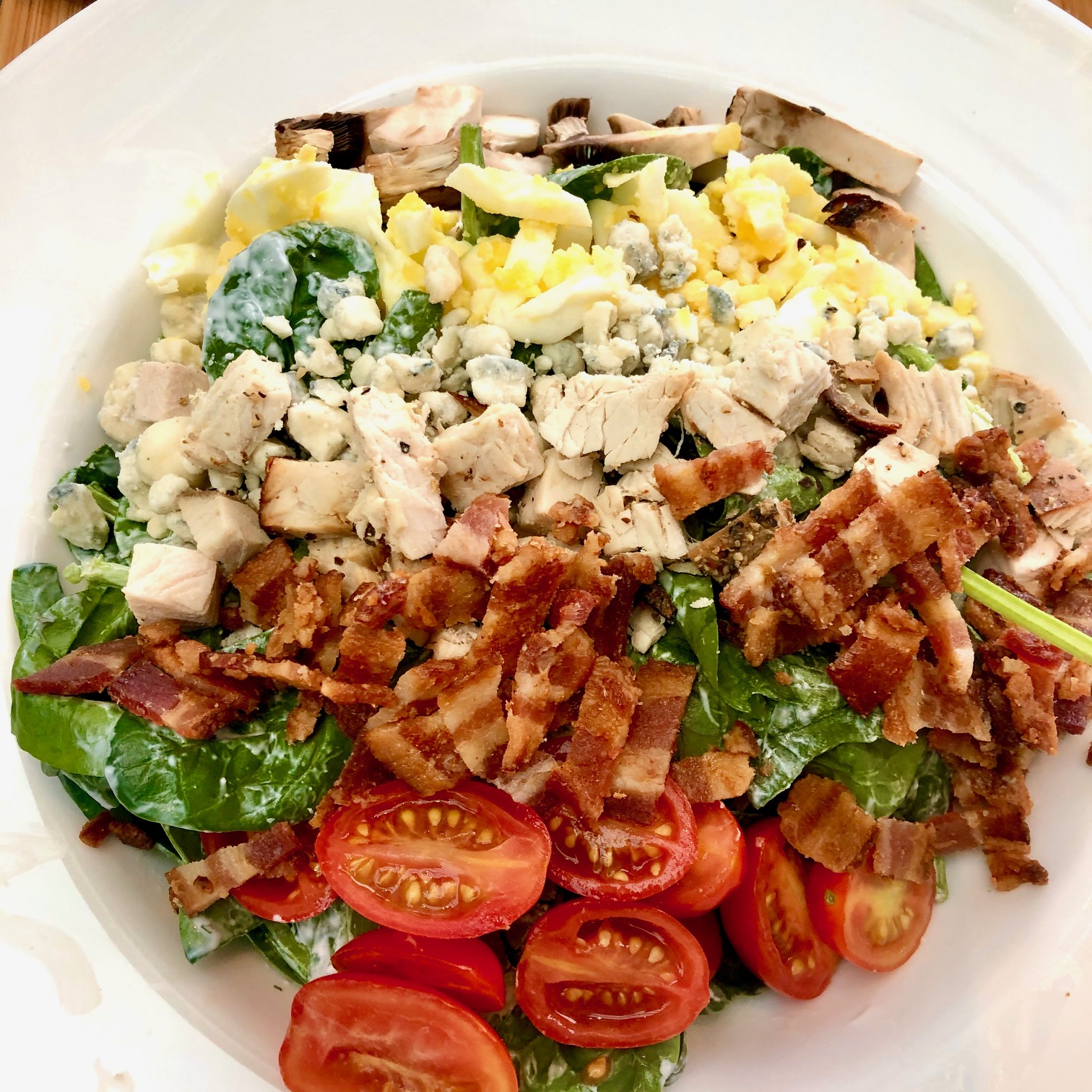
We started with a sampler platter of pickled turnip sticks, hummus, falafel, and dolmas. The hummus was exceptionally good but basic. We liked the turnip sticks very well, mainly because the pickling spices completely masked the turnip flavor. To us, this was a very good thing.
I have never understood falafel, though its admirers are very enthusiastic, and that makes me feel that I am somehow missing its charms. I figured if a chef from the Ralph Brennan Group could not convert me to falafel, I have given it the best chance. This falafel, (called ta’a’meya) was smaller than I am used to seeing, and greener inside than I expected. Chris Montero uses fava beans instead of chickpeas to give it an extra depth of flavor. Dried herbs round out the taste profile. Tahini sauce is served with it. I have to admit this was not bad, but I still don’t get falafel. Enthusiasts would love this version. I can think of one in particular who used to eat a big pile of falafel rounds in a pita, overflowing with dressings like on a poor boy. That was her version of a hamburger. I hope she tries Chris’s version.
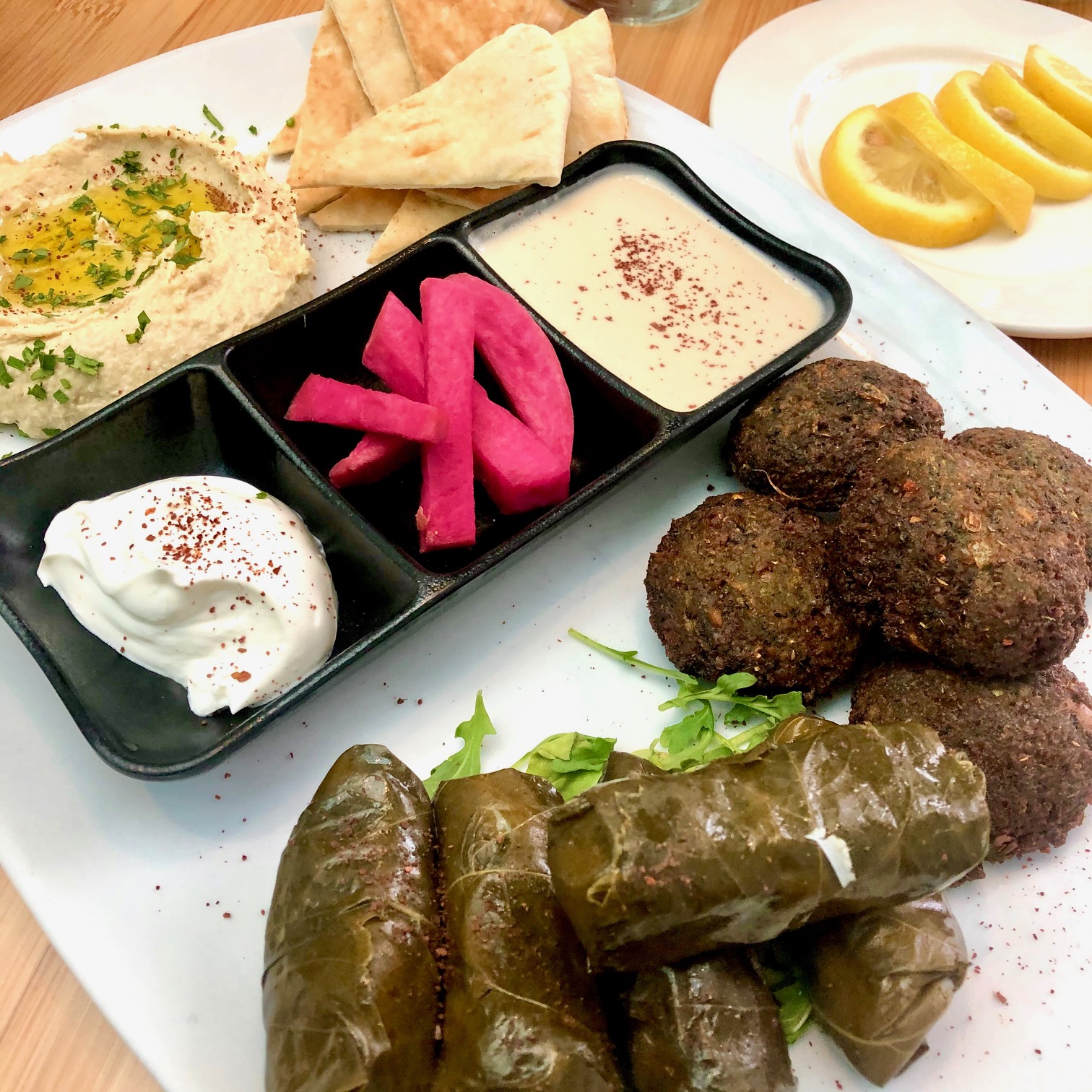
The same can be said for the dolmas, (called Mahsky) which were small Tootsie Roll-sized stuffed grape leaves. Here is the Alexandria version using only freekeh, but it seemed like there was meat in it to me. I’ve always thought that was an accomplishment, to make grains taste like meat. These were served with a favorite Israeli sauce with everything, labneh.
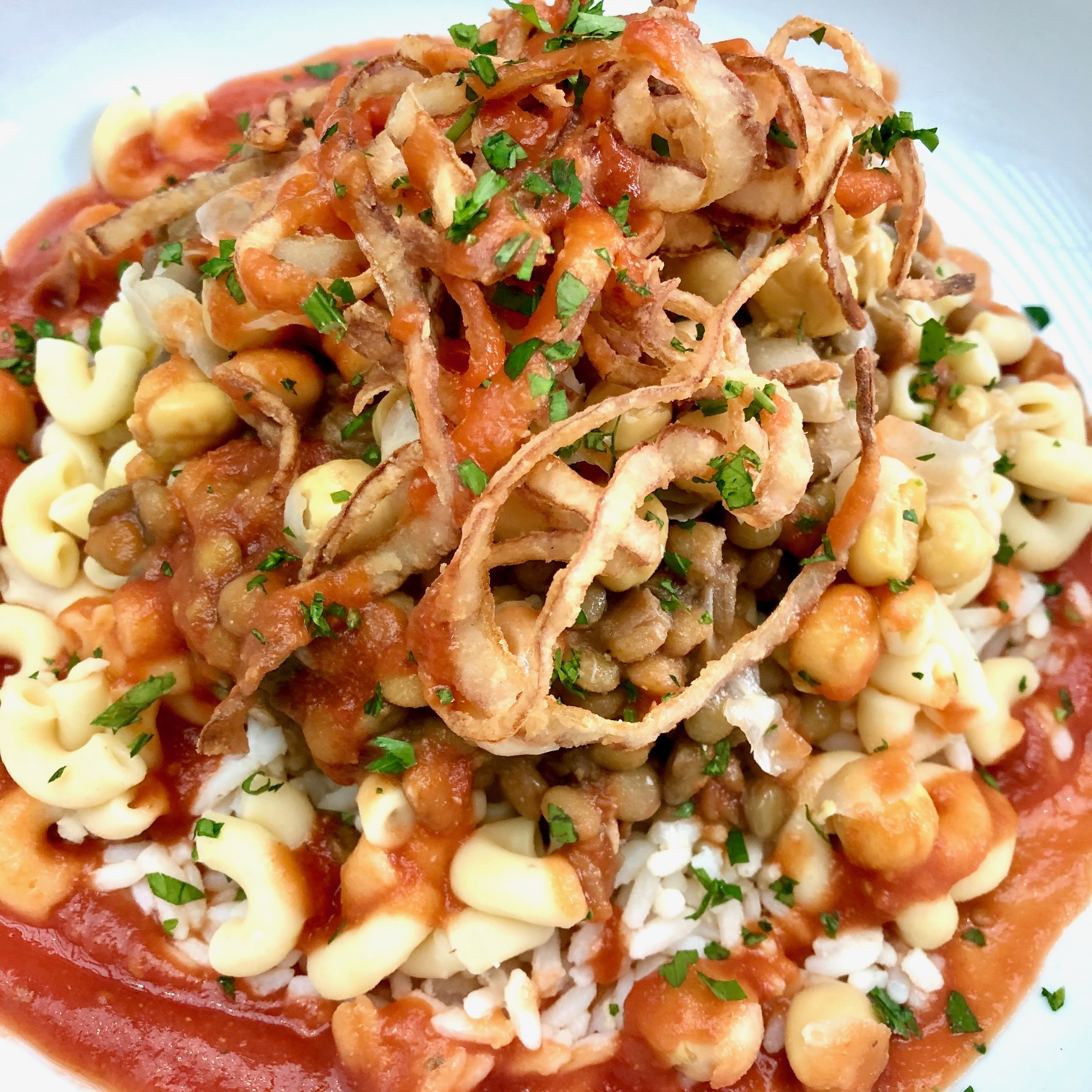
The next thing we had is Koshary, which I have nicknamed the “Carb Bowl.” In cultures like these Mediterranean nations (calling it cuisines seems a stretch) where meats and vegetables are eaten far less than here, people subsist on carbohydrates like chickpeas and lentils. But I was surprised to see elbow macaroni and white rice stacked high on this pile. Beneath it all was a red pepper-based tomato sauce that had a light kick to it. This was a cold dish that is considered street food in Egypt. What’s not to love about a bowl of rice, macaroni, and lentils? It was like a cold pasta salad, but I wondered how this might be warm.
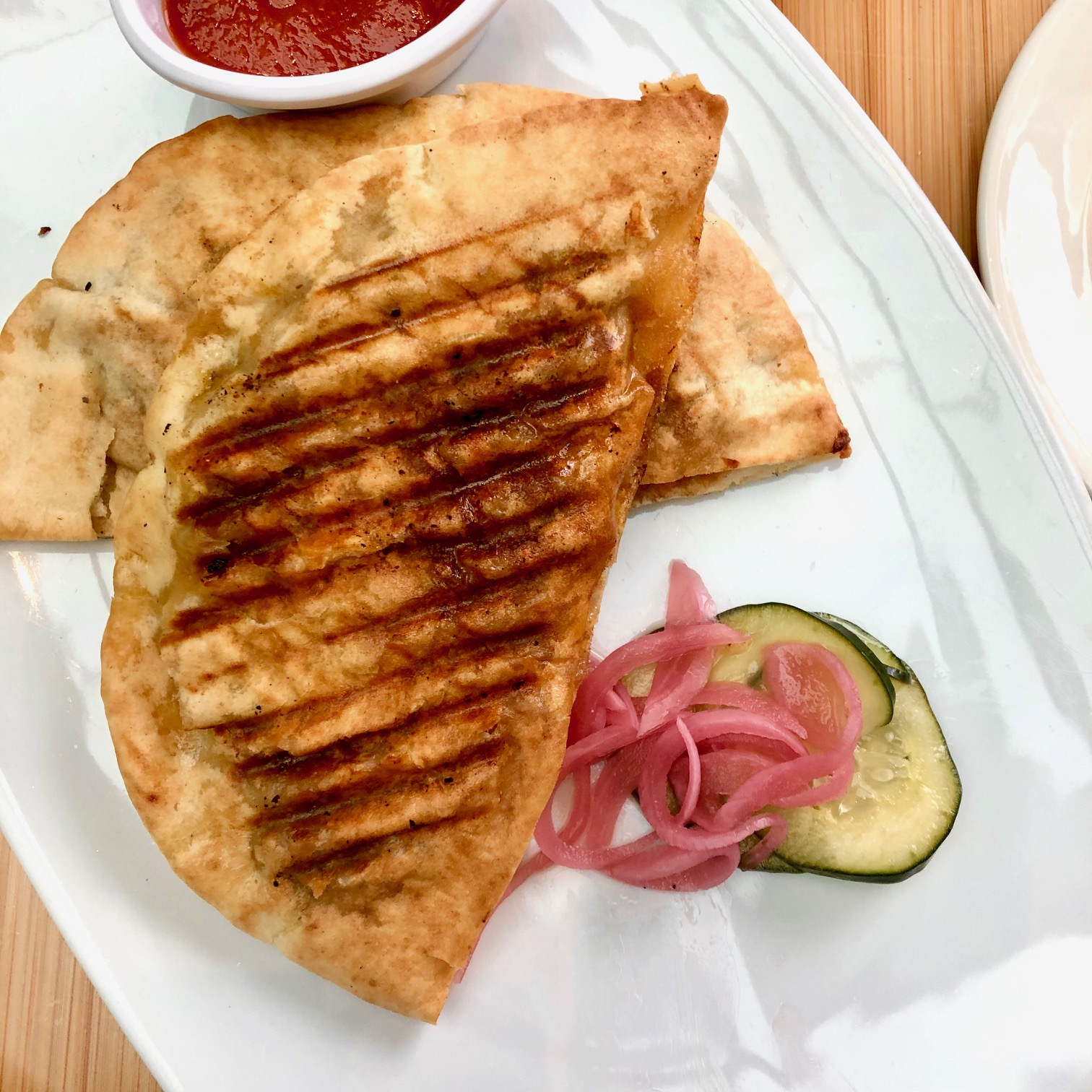
Hawawshi is another popular street food we tried, but I’d call it an Egyptian hamburger en croute. It was indeed an American-like patty wrapped completely in pita bread. The steam from the meat and vegetables in the patty softened the pita into a pastry. The presence of the lamb mixed in with the beef gave the patty a slightly exotic edge. This was served with more of that red-orange sauce at the base of the “Carb Bowl.”
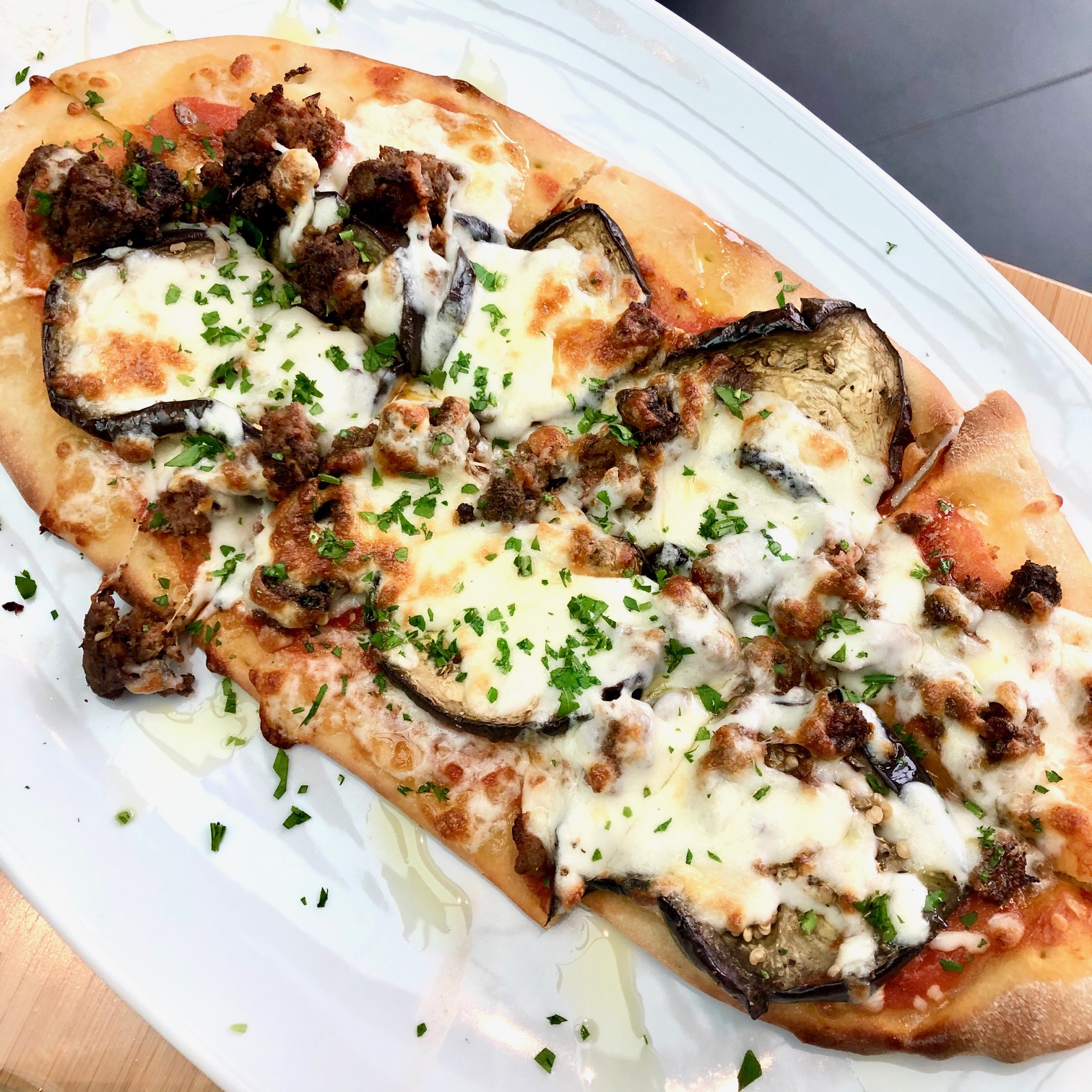
Flatbread is a word I doubt is uttered much in Cairo or anywhere else in the Middle East, but here it was, at our table. The dough was thicker than our normal version of hip pizza, but the toppings were definitely Mediterranean. Kefta, crumbled into irregular mounds of ground lamb, and slices of eggplant (mesa’a’sh) were layered and topped with mozzarella.
By far the favorite thing that came to the table happened at the end, when a small plate was placed before us, piled with powdered-sugar dusted cookies and one toasted almond in the center.
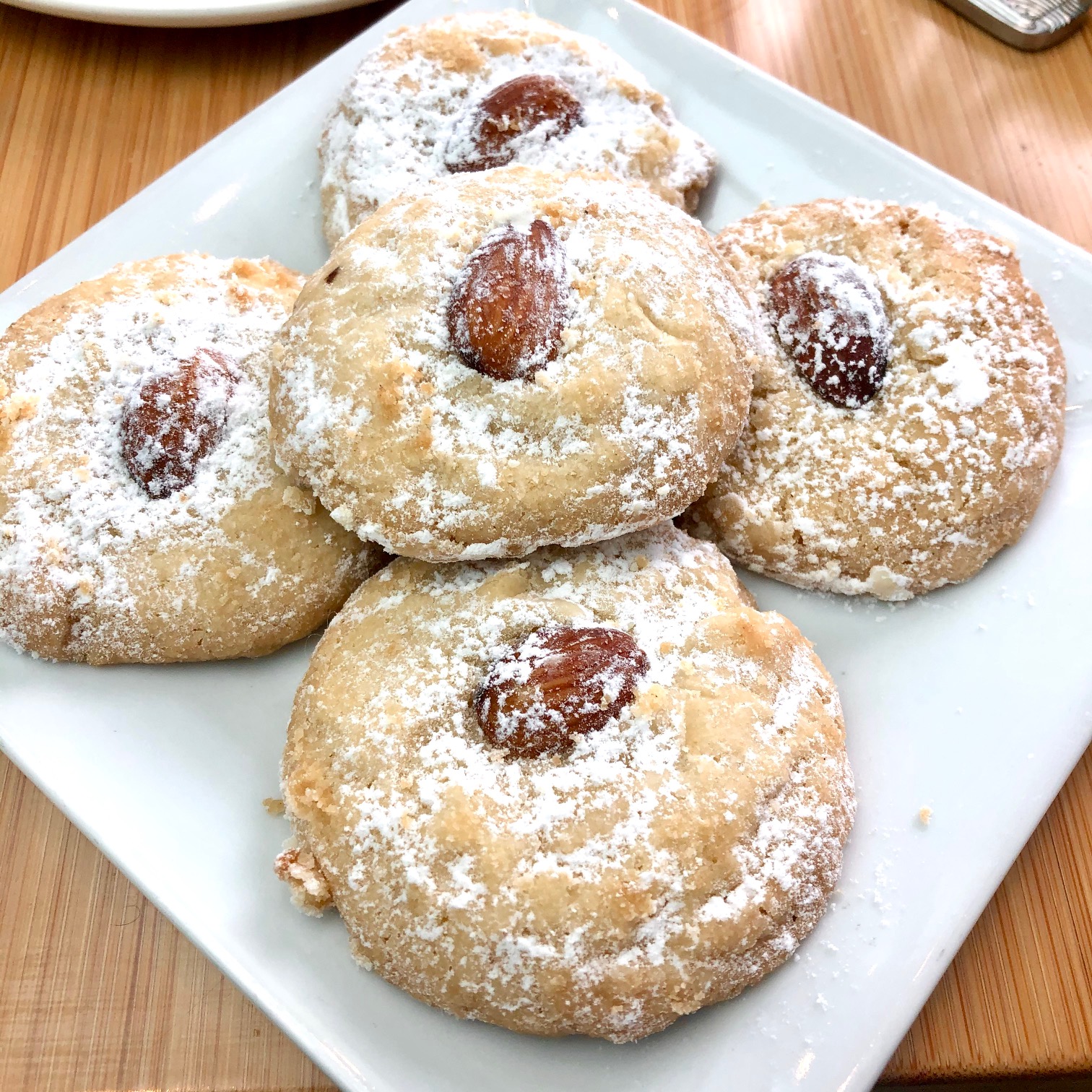
Generally speaking, I’m not that much of a cookie fan, especially of the nondescript variety. One bite of this cookie dazzled me. It was impossibly buttery with a rich taste that was hard to describe, but addictive. Our hostess explained that the “extra something” was cardamom and the butter in this butter cookie was ghee. Ghee is in supermarkets and is highly favored by its fans. It originated in India and is essentially clarified butter. I have always dismissed the ghee hype as a fad, but now that I have tasted it I get it. It’s a good thing I had to share these because I would have embarrassed myself.
Was any of this something I can’t wait to eat again? No, but it was a cultural adventure, and a fun way to celebrate a special exhibit. Besides, it is likely that most people will not be eating Egyptian food in Egypt, so here is a chance to experience it right here in New Orleans. For a limited time only.
